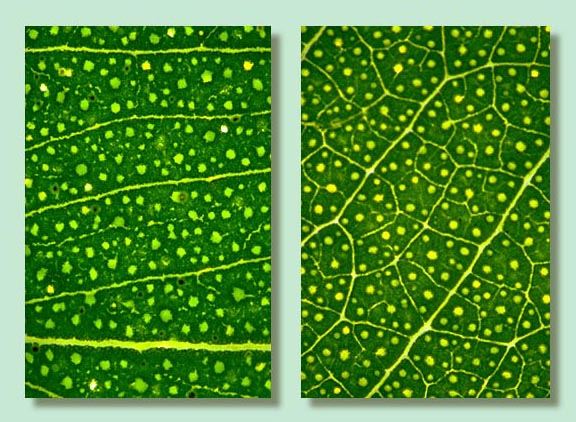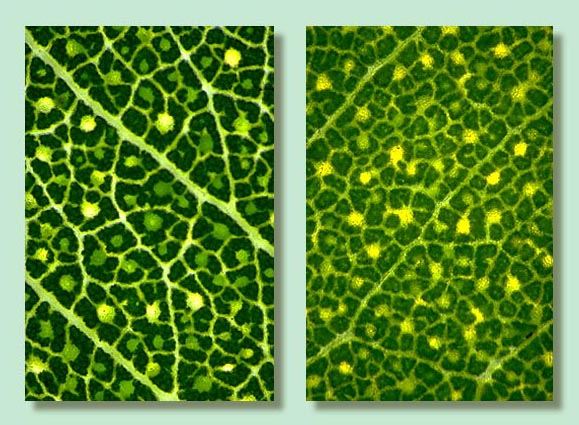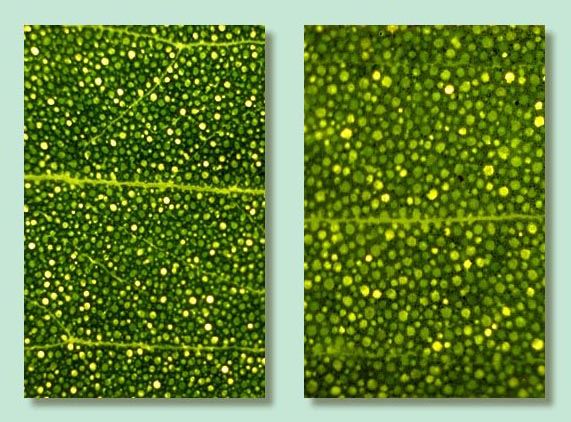Most eucalypt leaves have oil glands, although in many tropical species, glands may be absent or minute. This is rarely the case with southern species. The glands can be seen by holding the fresh leaf up to the sky, oblique to the sun, and inspecting with a lens. The glands will appear as green, yellow, white or clear light spots. To make comparisons valid, it is best to hold the leaf with its upper side towards the eye every time. It is necessary to use fresh leaves when assessing these oil gland characters as they are not clearly visible in a dried specimen. If prominent, oil glands may appear as black spots on the surface of the dried leaf, but association of the glands with the veins may be impossible to assess.
Mostly island
The oil glands will appear to be situated within the areoles and not touching the veins or veinlets (e.g. Eucalyptus baileyana).
Mostly intersectional
The oil glands will appear to be at the intersections of the veinlets or at least touching them (e.g. E. albopurpurea). Many species will have both island and intersectional glands and should be recorded as such.
Apparently absent
Some species will appear to lack glands altogether or the glands will be so minute that they may be disregarded for the purposes of identification (e.g. Corymbia ferriticola, E. fasciculosa).
Abundant, obscuring veins
Oil glands are numerous and so crowded that reticulation between the side-veins is completely obscured (e.g. E. tenera, E. pimpiniana). Often the side-veins and intramarginal veins are also obscured, leaving only the midrib visible.









